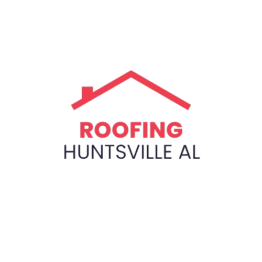A well-maintained roof is essential for the protection and longevity of any home. However, even the best-maintained roofs can encounter issues over time. Understanding the most common roofing problems can help homeowners address issues promptly, preventing further damage and costly repairs. In this blog, we’ll explore the five most prevalent roofing problems and provide tips on how to deal with them effectively.
1. Leaks and Moisture Damage
Causes of Roof Leaks
Leaks are one of the most common roofing problems homeowners face. They can occur for various reasons, including:
- Damaged Shingles: Shingles can crack, curl, or go missing, allowing water to seep through.
- Improper Installation: Poorly installed roofing materials can create gaps where water can penetrate.
- Worn Flashing: Flashing around chimneys, vents, and skylights can deteriorate, leading to leaks.
- Clogged Gutters: Blocked gutters can cause water to back up and seep under roofing materials.
Identifying and Fixing Leaks
To address leaks, start by identifying the source. Look for water stains on ceilings, damp spots in the attic, or visible damage on the roof. Once identified, repair or replace damaged shingles, reseal or replace flashing, and ensure gutters are clean and functional. For severe leaks, consider consulting a professional roofer.
2. Damaged or Missing Shingles
Why Shingles Get Damaged
Shingles can suffer damage due to various factors, including:
- Weather Conditions: High winds, hail, and heavy rain can cause shingles to crack, break, or blow away.
- Age: Over time, shingles can deteriorate due to exposure to the elements.
- Poor Maintenance: Neglecting regular roof maintenance can lead to shingle damage.
Addressing Shingle Damage
Regularly inspect your roof for damaged or missing shingles. Replace any that are cracked, curled, or missing to prevent water from penetrating the roof deck. Ensure you use shingles that match the existing ones in type and color to maintain the roof’s integrity and appearance.
3. Poor Roof Ventilation
The Importance of Ventilation
Proper ventilation is crucial for maintaining a healthy roof. It helps regulate temperature and moisture levels in the attic, preventing heat buildup and condensation. Poor ventilation can lead to several issues, including:
- Mold and Mildew Growth: Excess moisture can cause mold and mildew to develop, leading to health hazards and structural damage.
- Roof Deck Damage: Trapped moisture can cause the roof deck to warp or rot.
- Reduced Roof Lifespan: Heat buildup can cause roofing materials to deteriorate faster.
Improving Roof Ventilation
Ensure your roof has adequate ventilation by checking for intake vents (usually located at the eaves) and exhaust vents (often located at the ridge). These vents should be free of obstructions to allow for proper airflow. If your roof lacks sufficient ventilation, consider installing additional vents or a ridge vent system.
4. Flashing Failures
The Role of Flashing
Flashing is a thin material, usually metal, installed at joints and seams to prevent water infiltration. It is commonly found around chimneys, vents, skylights, and valleys. Flashing failures can occur due to:
- Corrosion: Metal flashing can corrode over time, especially in areas with high moisture or salt exposure.
- Improper Installation: Poor installation can leave gaps where water can penetrate.
- Physical Damage: Flashing can become damaged from impacts or weather conditions.
Repairing and Replacing Flashing
Regularly inspect the flashing on your roof for signs of damage or corrosion. Repair any small cracks or gaps with roofing cement or sealant. For extensive damage or corroded flashing, it’s best to replace the flashing entirely. Proper installation is crucial, so consider hiring a professional roofer to ensure it’s done correctly.
5. Roof Punctures and Penetrations
Causes of Roof Punctures
Roof punctures and penetrations can be caused by various factors, such as:
- Falling Debris: Branches, tree limbs, or other debris can fall and puncture the roof.
- Animal Activity: Birds, squirrels, and other animals can create holes in the roof while searching for food or shelter.
- Foot Traffic: Walking on the roof can cause damage, especially if the roofing material is not designed to withstand foot traffic.
Preventing and Repairing Punctures
To prevent roof punctures, trim overhanging branches and regularly check for signs of animal activity. If you need to walk on the roof, use walk pads or distribute weight evenly to minimize damage. For minor punctures, patch the area with roofing cement or a patching kit. For more significant damage, it’s advisable to consult a professional to assess and repair the roof properly.
Conclusion
Understanding and addressing common roofing problems can significantly extend the life of your roof and protect your home from potential damage. Regular inspections, prompt repairs, and preventive maintenance are key to maintaining a healthy roof. By staying vigilant and proactive, you can ensure your roof continues to provide the protection your home needs. Remember, when in doubt, always consult with a professional roofer to handle complex or severe roofing issues.
